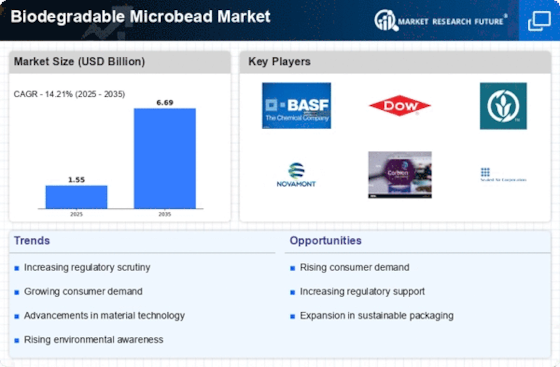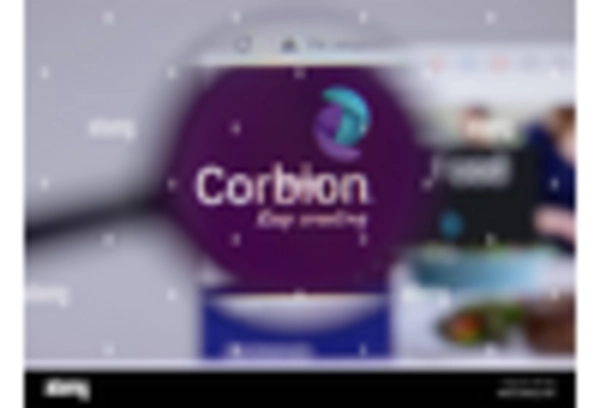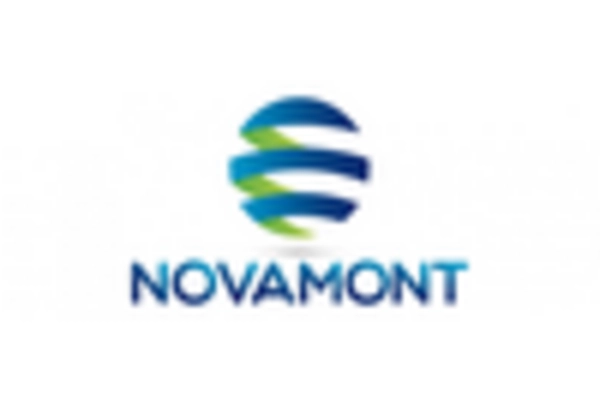Rising Environmental Awareness
The increasing awareness regarding environmental issues appears to be a pivotal driver for the Biodegradable Microbead Market. Consumers are becoming more conscious of the ecological impact of plastic pollution, leading to a shift towards sustainable alternatives. This trend is reflected in market data, which indicates that the demand for biodegradable products has surged by approximately 20% over the past year. As consumers actively seek eco-friendly options, manufacturers are compelled to innovate and incorporate biodegradable microbeads into their formulations. This shift not only aligns with consumer preferences but also enhances brand loyalty, as companies that prioritize sustainability are often favored over those that do not. Consequently, the rising environmental awareness is likely to propel the growth of the Biodegradable Microbead Market, as stakeholders recognize the necessity of adopting sustainable practices.
Regulatory Support and Legislation
Regulatory frameworks and legislation aimed at reducing plastic waste are increasingly influencing the Biodegradable Microbead Market. Governments across various regions are implementing stringent regulations to limit the use of conventional plastic microbeads in personal care and cosmetic products. For instance, recent policies have mandated the gradual phase-out of non-biodegradable microbeads, thereby creating a favorable environment for biodegradable alternatives. Market data suggests that regions with strict regulations have witnessed a notable increase in the adoption of biodegradable microbeads, with a growth rate of approximately 15% in the last two years. This regulatory support not only encourages manufacturers to invest in research and development of biodegradable materials but also enhances consumer confidence in the safety and sustainability of these products. As such, the evolving regulatory landscape is poised to significantly impact the Biodegradable Microbead Market.
Consumer Preference for Natural Ingredients
The growing consumer preference for natural and organic ingredients is emerging as a significant driver for the Biodegradable Microbead Market. As consumers become more discerning about the products they use, there is a marked shift towards formulations that incorporate natural components. This trend is particularly evident in the beauty and personal care sectors, where products featuring biodegradable microbeads derived from natural sources are gaining traction. Market data reveals that products labeled as 'natural' have experienced a sales increase of approximately 30% in recent years, indicating a robust demand for such offerings. Consequently, manufacturers are increasingly reformulating their products to include biodegradable microbeads, aligning with consumer expectations for transparency and sustainability. This shift not only enhances the appeal of products but also positions the Biodegradable Microbead Market favorably in a competitive landscape.
Corporate Social Responsibility Initiatives
Corporate social responsibility (CSR) initiatives are becoming increasingly relevant in the Biodegradable Microbead Market. Companies are recognizing the importance of sustainability in their business practices and are actively engaging in initiatives that promote environmental stewardship. This commitment to CSR is often reflected in product development strategies, where firms prioritize the use of biodegradable materials in their offerings. Market data suggests that companies with robust CSR programs have seen a 20% increase in consumer trust and brand loyalty, which directly influences purchasing decisions. As consumers gravitate towards brands that demonstrate a commitment to sustainability, the Biodegradable Microbead Market is likely to benefit from this trend. The alignment of corporate values with consumer expectations not only enhances brand reputation but also drives innovation in the development of biodegradable microbeads.
Technological Innovations in Biodegradable Materials
Technological advancements in the development of biodegradable materials are playing a crucial role in shaping the Biodegradable Microbead Market. Innovations in material science have led to the creation of new biodegradable polymers that offer enhanced performance and functionality. These advancements enable manufacturers to produce microbeads that not only meet environmental standards but also maintain the desired efficacy in various applications. Market data indicates that the introduction of novel biodegradable materials has contributed to a 25% increase in product offerings within the industry over the past year. As technology continues to evolve, it is anticipated that the Biodegradable Microbead Market will experience further growth, driven by the continuous improvement of material properties and the expansion of application areas. This technological progress is likely to attract new players into the market, fostering competition and innovation.


















Leave a Comment